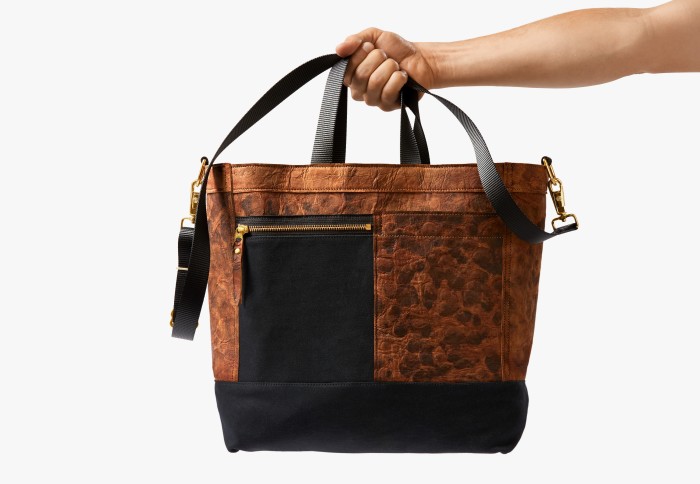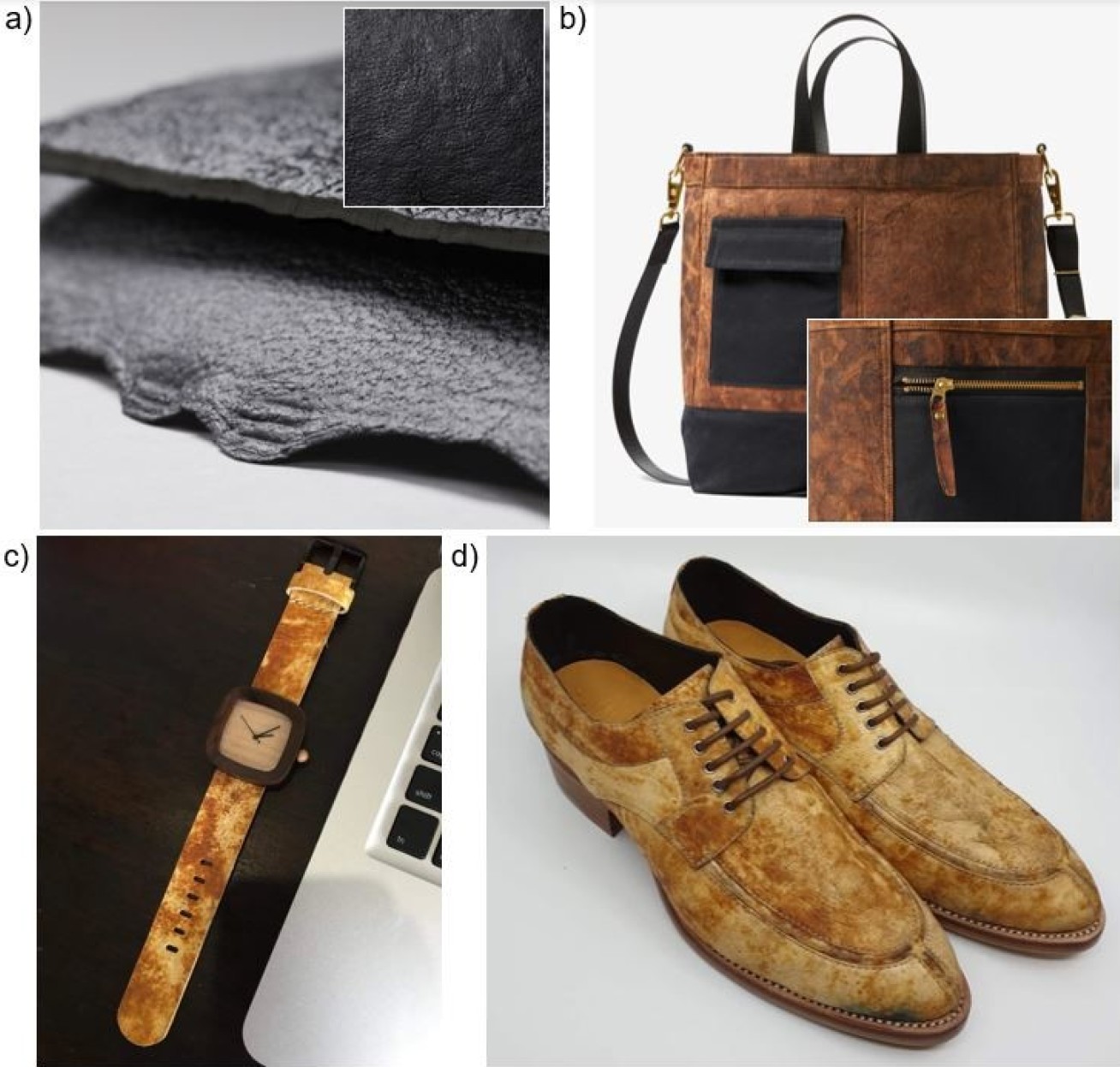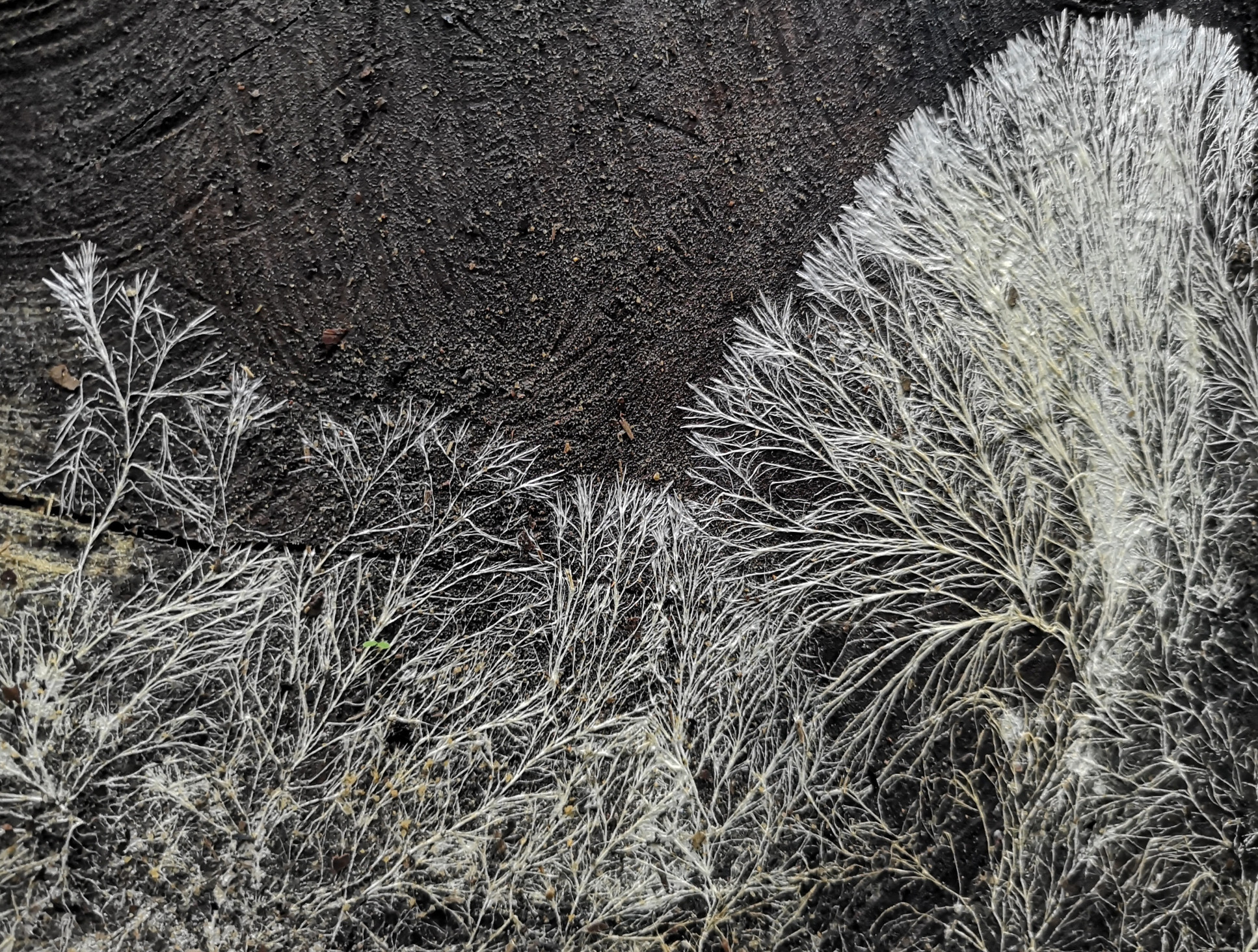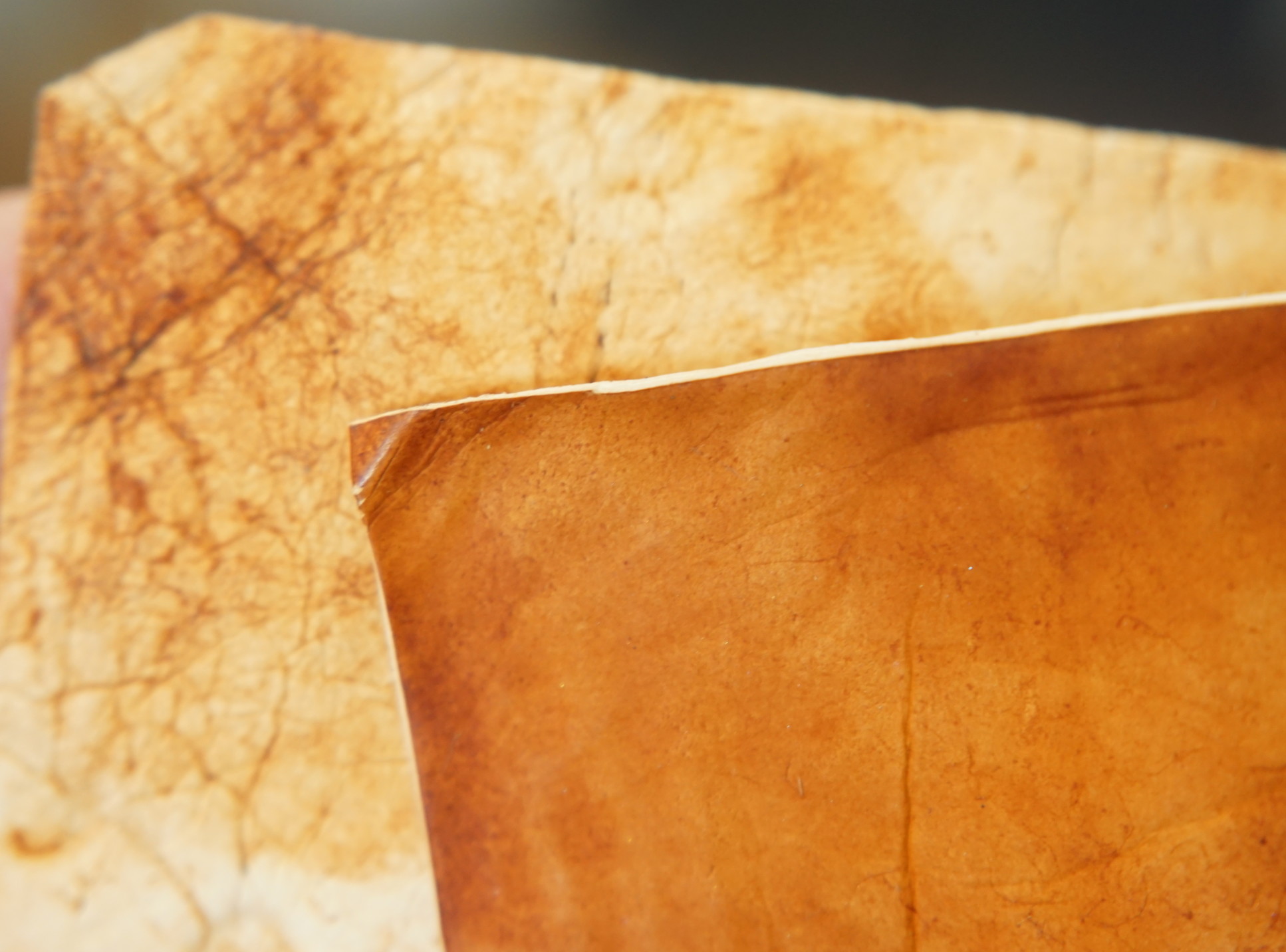Fungus leather substitute could be eco-friendlier than animal and plastic kinds

A handbag made from fungal leather, courtesy of Bolt Threads (USA)
“Promising” fungal leather that looks and feels like traditional leather could be eco-friendlier and cheaper than animal and plastic versions.
In a new review paper by the University of Vienna, Imperial College London, and RMIT University in Australia, researchers argue that leather made from fungi has “considerable potential” to be the best leather substitute in terms of sustainability and cost when compared to animal and plastic-derived versions.
Fungi-derived leather has considerable potential to be one of the the best leather substitutes in terms of sustainability and cost. Professor Alexander Bismarck Department of Chemical Engineering
They say that, unlike its traditional and synthetic counterparts, producing fungi-based leather uses fewer hazardous chemicals and releases less extra carbon into the atmosphere – and that the resulting fabric looks and feels like traditional leather in terms of durability and flexibility.
It is also fully biodegradable when not combined with another material to make composite leather, so can be safely disposed of without leaving a plastic footprint.
The paper is published in Nature Sustainability.
Traditional leather, made from cow hides, brings ethical issues as well as the deforestation and greenhouse gas emissions associated with livestock farming. Treating cowhides to turn it into leather, known as tanning, often uses hazardous chemicals that can leach into the environment.
Leather alternatives, like those made from plastic, are vegan in that they don’t use animal hides. However, traditional synthetic leather is made using the polymers polyurethane (PU) or polyvinyl chloride (PVC), which, like most other plastics, are made from fossil fuels and are not biodegradable.

Study co-author Professor Alexander Bismarck, from the University of Vienna and Imperial’s Department of Chemical Engineering, said: “We tend to think of synthetic leather, sometimes known as ‘vegan leather’, as being better for the environment. However, traditional leather might be ethically questionable, and both leather and plastic substitutes have issues with environmental sustainability.
“Fungi-derived leather brings none of these issues to the table, and therefore has considerable potential to be one of the the best leather substitutes in terms of sustainability and cost.”
Moulding the future
Fungal leather is becoming a promising new frontrunner in the quest for sustainable and ethical clothing. Dr Mitchell Jones University of Vienna
Leather substitutes can be produced from fungi by upcycling low-cost agricultural and forestry by-products like sawdust. These serve as ‘feedstock’ on which to grow mycelium – a matted mass of elongated fungal threads, which grow into a sheet.
Within a few weeks, the fungal sheet can be harvested and physically and chemically treated by pressing and crosslinking to produce a material with a similar feel to animal leather. This material consists mainly of biodegradable chitin and glucan biopolymers.

The researchers say fungi-derived leather could be of particular interest to sustainability-conscious consumers and companies as well as to the vegan community, and that the commercial and consumer appetite for bio-derived leather alternatives like those from fungi and cellulose is growing.
Co-author Dr Mitchell Jones from the University of Vienna said: “Renewable, bio-derived clothing is a growing market, and fungal leather is becoming a promising new frontrunner in the quest for sustainable and ethical clothing.”
Blooming possibilities
The review examines the sustainability of animal and synthetic leathers and presents an overview of the first developments and commercialisation of leather substitutes derived from fungi.

According to the authors, one of the greatest challenges in the production of fungi-derived leather is in making consistently good quality mycelium sheets that exhibit uniform growth and consistent thickness, colour and mechanical properties.
Professor Bismarck said: “Substantial advances in fungi-based leathers and the growing number of companies that are producing them suggests that this new material will play a considerable role in the future of ethically and environmentally responsible fabrics.”
“Leather-like material biofabrication using fungi” by Mitchell Jones, Antoni Gandia, Sabu John and Alexander Bismarck, published 7 September 2020 in Nature Sustainability.
This press release was adapted from a press release by the University of Vienna.
IMAGES
Main: Bolt Threads (USA)
Image 1: Bolt Threads Inc. (Emeryville, U.S.A) and MycoTech (Bandung, Indonesia)
Image 2: Shutterstock
Image 3: Antoni Gandia (Mogu S.r.l.)
Article text (excluding photos or graphics) © Imperial College London.
Photos and graphics subject to third party copyright used with permission or © Imperial College London.
Reporter
Caroline Brogan
Communications Division